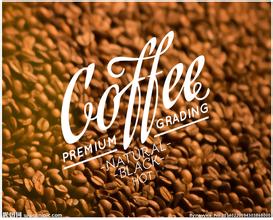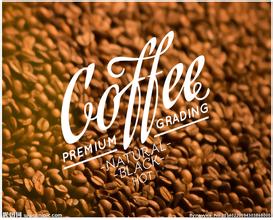The flavor and taste characteristics of Guatemalan coffee manor with sour and sweet fruit introduction to fine coffee beans
Guatemala is located in the tropics, the northern and eastern coastal plains have a tropical rain forest climate, the southern mountains have a subtropical climate, the year is divided into two dry and wet seasons, with the wet season from May to October and the dry season from November to April of the following year. The narrow and fertile flatlands on the Pacific side of Guatemala have a tropical climate. The central plateau is also the cultural center of Guatemala, where temperatures are mild all year round at an altitude of 1300 to 1800 meters, with daily temperatures between 18 and 28 ℃, and higher levels tend to be colder in January and February. The annual precipitation is 2000-3000 mm in the northeast and 500-1000 mm in the south. [8]
Topography and geomorphology
All of Guatemala is made up of mountains and plateaus. There are Kuchu Matanes Mountains in the west, Madre Mountains in the south, volcanic belts in the west and south, with more than 30 volcanoes. Tahumurco volcano is 4211 meters above sea level, which is the highest peak in Central America. Earthquakes are frequent. There are Petten lowlands in the north. There are narrow coastal plains on the Pacific coast. The major cities are mostly distributed in the intermountain basins in the south. The northern lowland plain Peteng is a tropical rain forest, and volcanoes on the central highlands can reach 4200 meters. [5]
Hydrology
There are several lakes in Guatemala, of which the largest lake is Lake Isawar in the province of Isawar and the deepest lake is Lake Attilan in the province of Solola. The main rivers that flow through Guatemala are the Motagua River, the Usuma Xinda River, the Chikso River and the Shaston River. The Chikso River is the source of the Ursuma Xinda River. [7]
Natural resources editor
The forest area of Guatemala accounts for half of the country, especially in the lowlands of Peteng.
Guatemala
Guatemala
Rich in valuable wood such as mahogany. Mineral resources include lead, zinc, chromium, antimony, gold, silver, mercury and nickel, with oil reserves of 1.43 billion barrels. The forest area accounts for 38% of the country's area. [8]
National symbol editor
Name of country
The Republic of Guatemala (The Republic of Guatemala, La Rep ú blica de Guatemala) is referred to as Guatemala. [10]
National flag
The Guatemalan flag, which was used in 1971, is rectangular with a ratio of length to width of 8:5. The face of the flag consists of three parallel and equal vertical rectangles, with white in the middle and blue on both sides; the white rectangle is painted with the national emblem in the center. The color of the national flag comes from the color of the original Central American federal flag. Blue symbolizes the Pacific Ocean and the Caribbean respectively, while white symbolizes the pursuit of peace.
In Guatemala, it is famous for producing high-quality beans, which is the highest elevation and dry climate in the coffee growing area of the country. Located in a rare non-volcanic area in China and the United States, the mountains are potholed and the terrain is very dangerous. Although nearly 2000 meters above sea level, the warm, dry air from the plains of Mexico protects coffee trees in the area from frost.
Guatemala Antigua Coffee is not only smooth, high hardness, good quality, more full-bodied and sour and sweet perfect match, coupled with a trace of smoke, but also emphasizes its deep and mysterious. In particular, the sour, sweet and mellow texture of Antigua is so perfectly coordinated that it is not only of good quality, but also has a stronger flavor, richer taste and stronger tobacco flavor than other Guatemalan coffee.
Antigua coffee, which grows in volcanic areas, prides itself on its rich aroma, with a variety of coffee flavors ranging from strong sour to light sour. Guatemala is very suitable for growing coffee. The annual precipitation is also very abundant. The alpine areas above 1400 meters above sea level and the climate of Guatemala, where the humidity ratio is 60-70%, have created a natural environment for the cultivation of high-quality coffee. The highest grade of Guatemalan coffee is SHB (Strictly Hard bean: hard coffee beans grown in alpine areas). Coffee branded according to the region is also very famous. Antigua and Koban in Guatemala are good examples. Regional brands (Antigua and Koban, etc.) are classified through rigorous quality and aroma tests by the Guatemalan Coffee Association. General coffee that does not pass this classification standard will not mention the name of the place where it is produced, but will only indicate SHB. This bean belongs to bourbon coffee beans, is one of the varieties with strong sour taste, mellow taste and slightly wild. Guatemala's extremely hard beans are famous for their elegant, sour, clean, well-structured, as well as sour apples, berries, jasmine, orange peel, green pepper, sweet and sour fruit, sweet chocolate, and even smoky aftertaste. Excellent sour taste, mellow aftertaste, mysterious feeling. Suitable for release after hangover

Important Notice :
前街咖啡 FrontStreet Coffee has moved to new addredd:
FrontStreet Coffee Address: 315,Donghua East Road,GuangZhou
Tel:020 38364473
- Prev

Light aroma Java coffee flavor taste manor characteristics of boutique coffee beans
After the founding of the Yuan Dynasty in China, the Yuan Emperor Kublai Khan and Java often sent envoys to each other to maintain friendship. [1] later, the King of Java stabbed Meng Youcheng, the envoy of the Yuan Dynasty, which Kublai Khan thought was a great insult to the Dayuan Empire. So he decided to send troops to invade Java in 1292. By the 29th year of Yuan (1292), Kublai Khan appointed Shi Bi as commander-in-chief, and Taiqing of Quanzhou was also lost.
- Next

Introduction to the Flavor and Taste of Kilimanjaro Coffee Manor in Tanzania
The types of rainfall can be divided into bimodal distribution and unimodal distribution. The areas with double bee rainfall include the provinces around the Lake Victoria basin, the northeast highlands, the coastal and inland northeastern. The bimodal rainfall area is characterized by two rainy seasons. The short rainy season occurs from September to December. The total rainfall can reach 200-500 mm. The long rainy season occurs from March to May.
Related
- Detailed explanation of Jadeite planting Land in Panamanian Jadeite Manor introduction to the grading system of Jadeite competitive bidding, Red bid, Green bid and Rose Summer
- Story of Coffee planting in Brenka region of Costa Rica Stonehenge Manor anaerobic heavy honey treatment of flavor mouth
- What's on the barrel of Blue Mountain Coffee beans?
- Can American coffee also pull flowers? How to use hot American style to pull out a good-looking pattern?
- Can you make a cold extract with coffee beans? What is the right proportion for cold-extracted coffee formula?
- Indonesian PWN Gold Mandrine Coffee Origin Features Flavor How to Chong? Mandolin coffee is American.
- A brief introduction to the flavor characteristics of Brazilian yellow bourbon coffee beans
- What is the effect of different water quality on the flavor of cold-extracted coffee? What kind of water is best for brewing coffee?
- Why do you think of Rose Summer whenever you mention Panamanian coffee?
- Introduction to the characteristics of authentic blue mountain coffee bean producing areas? What is the CIB Coffee Authority in Jamaica?

